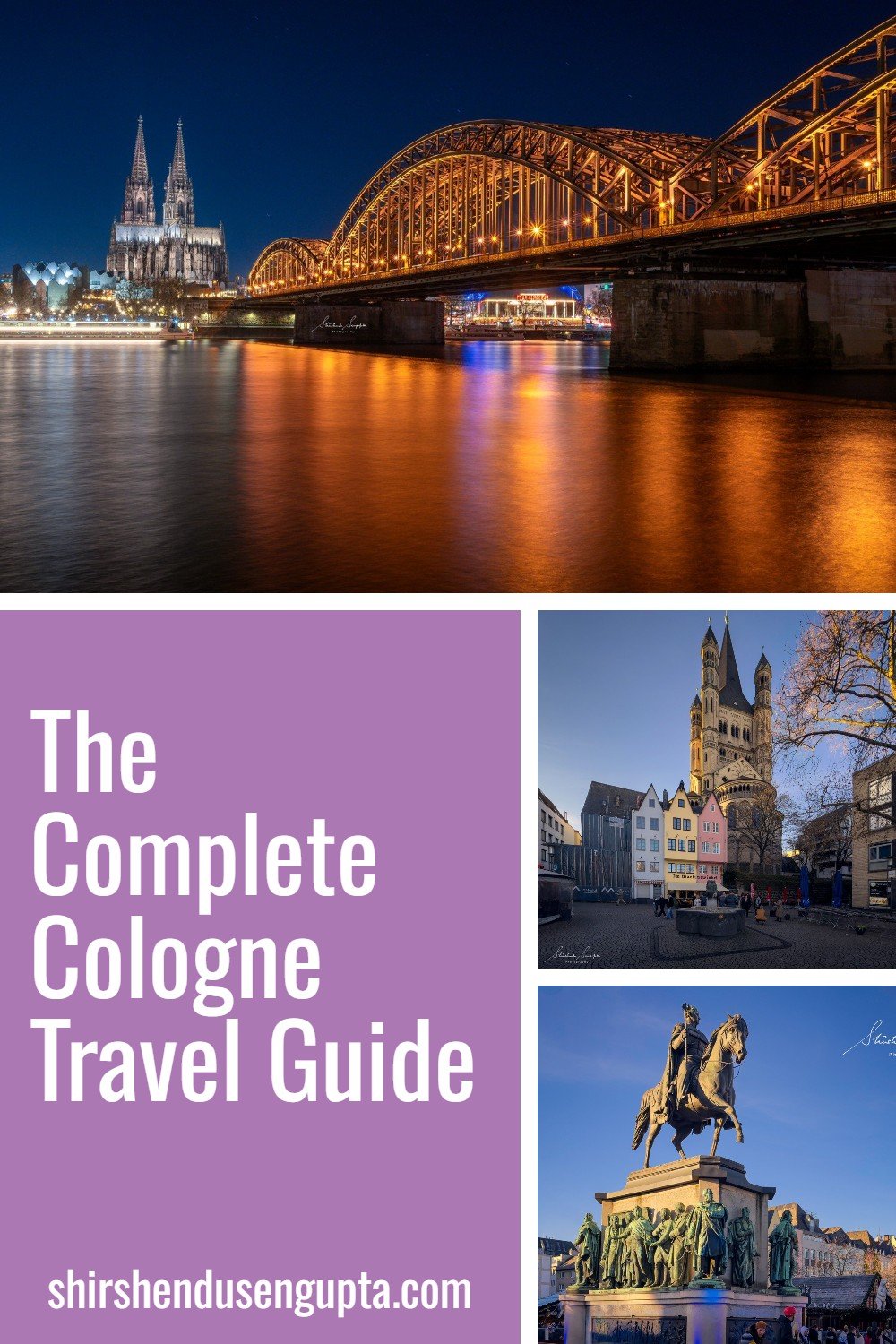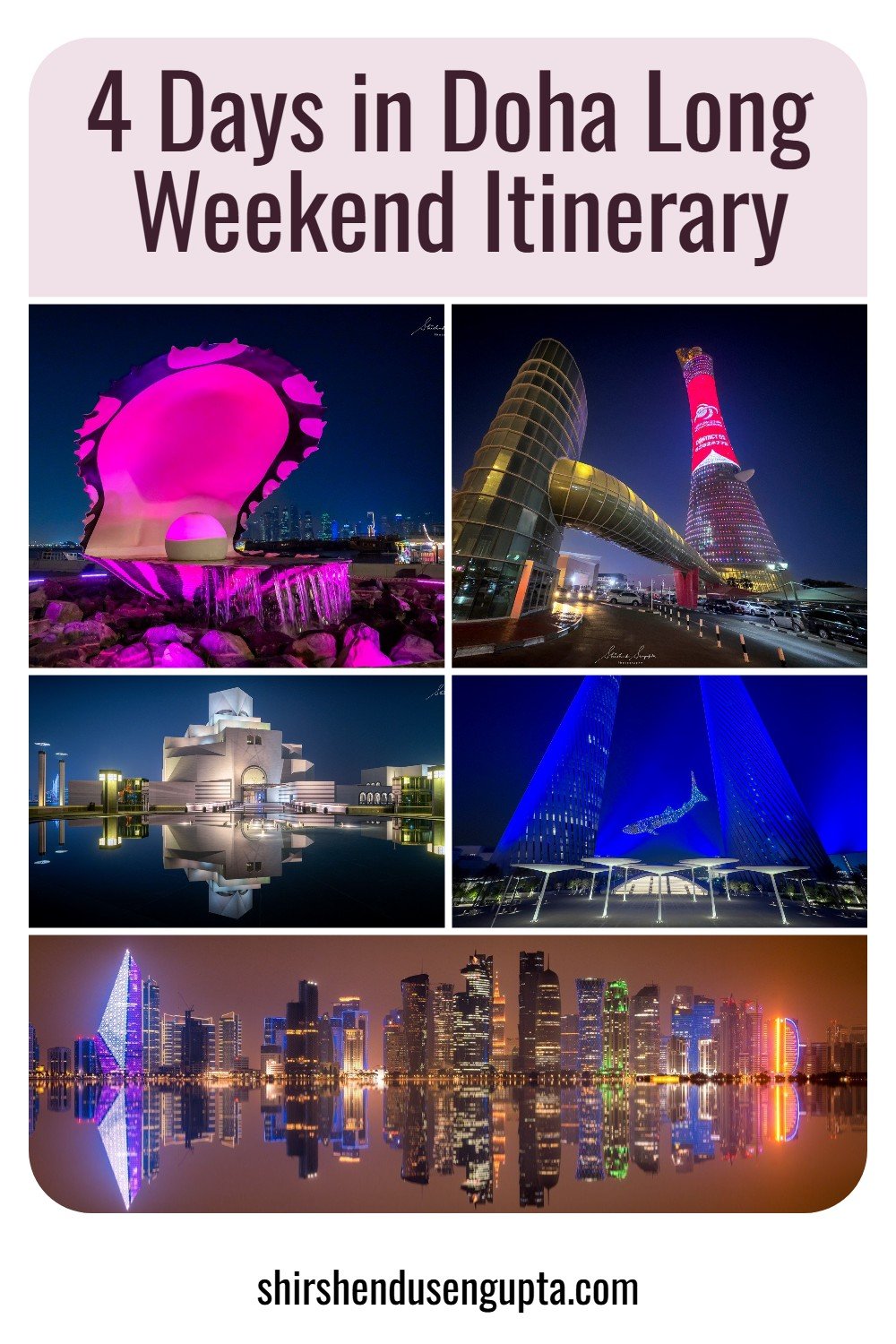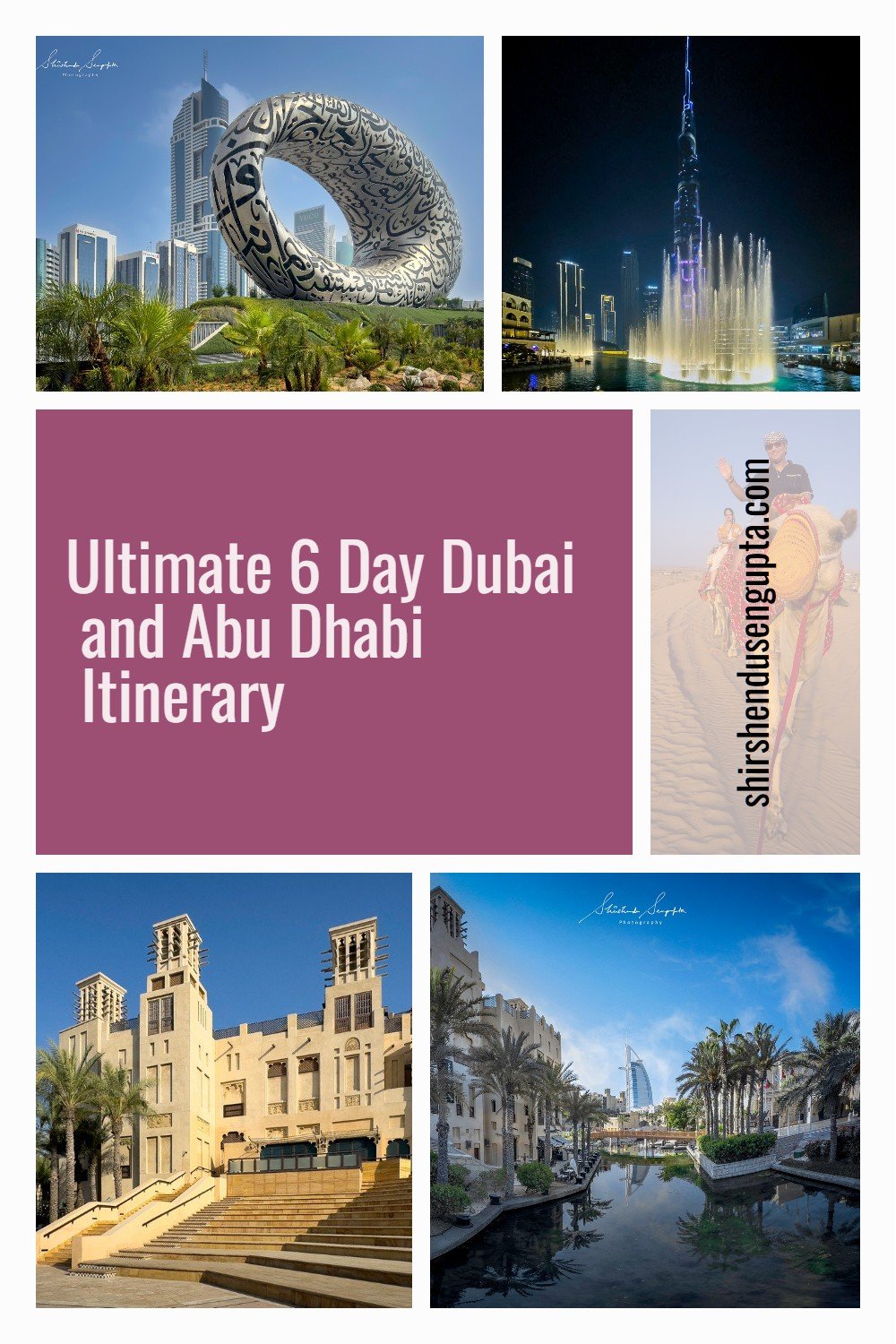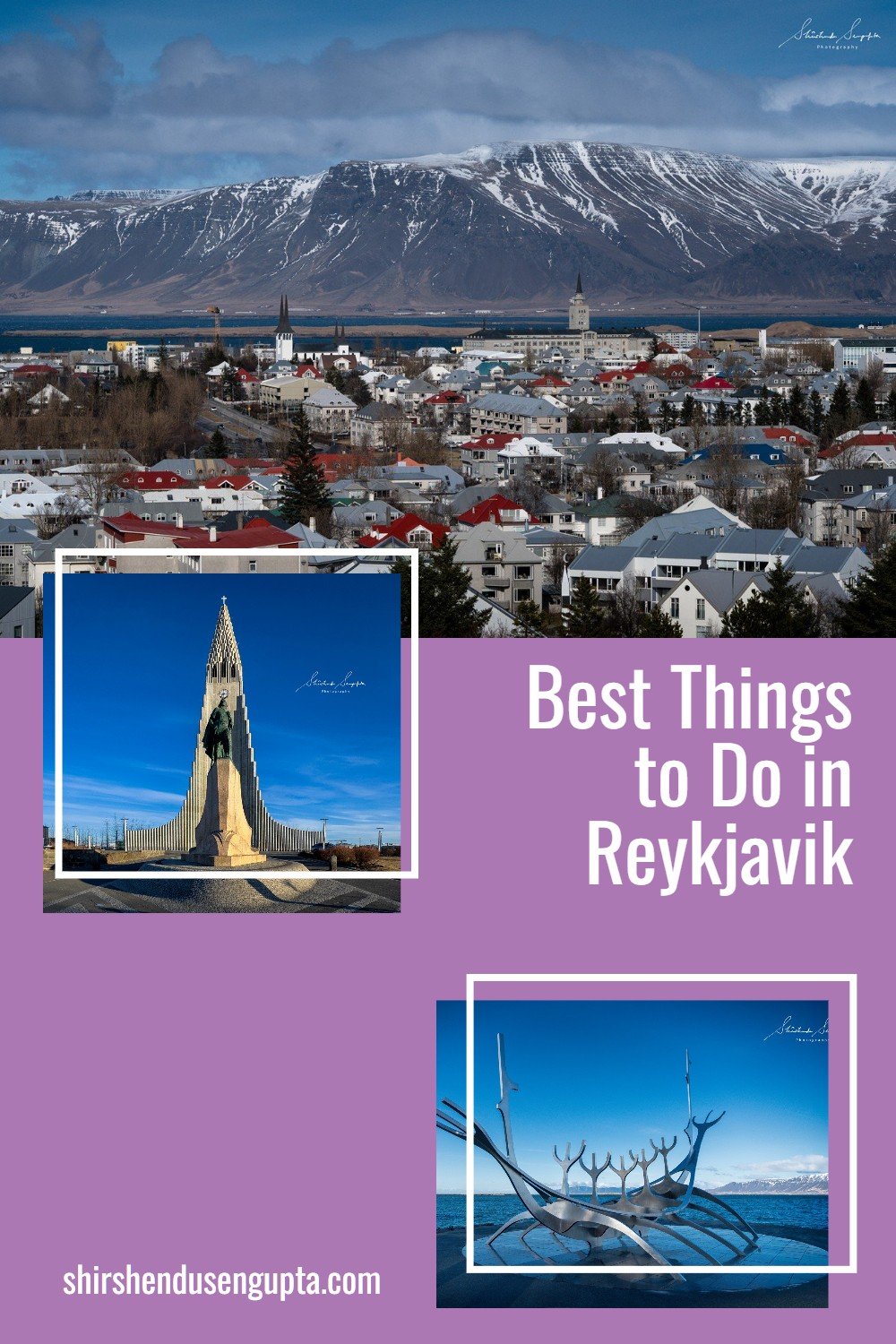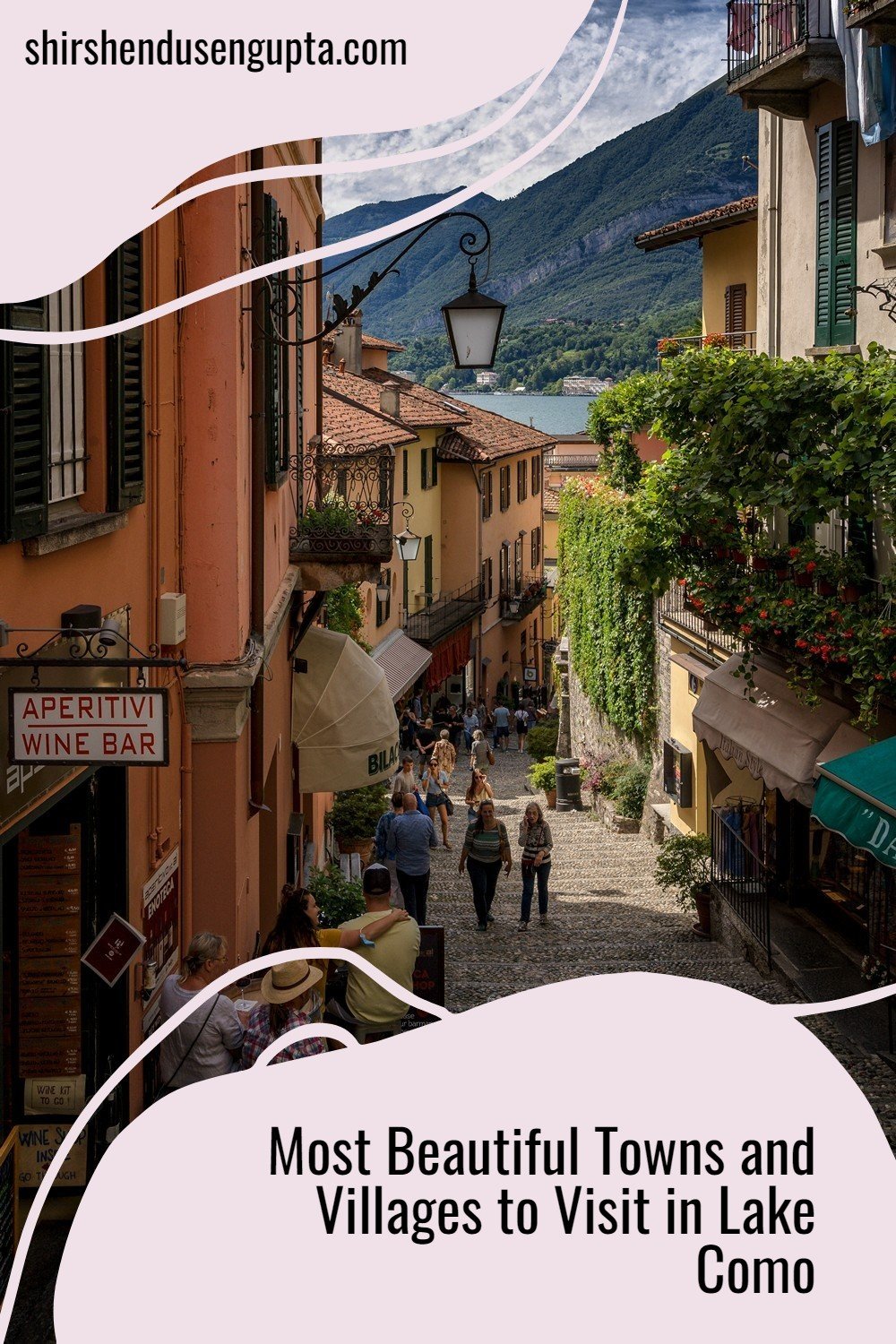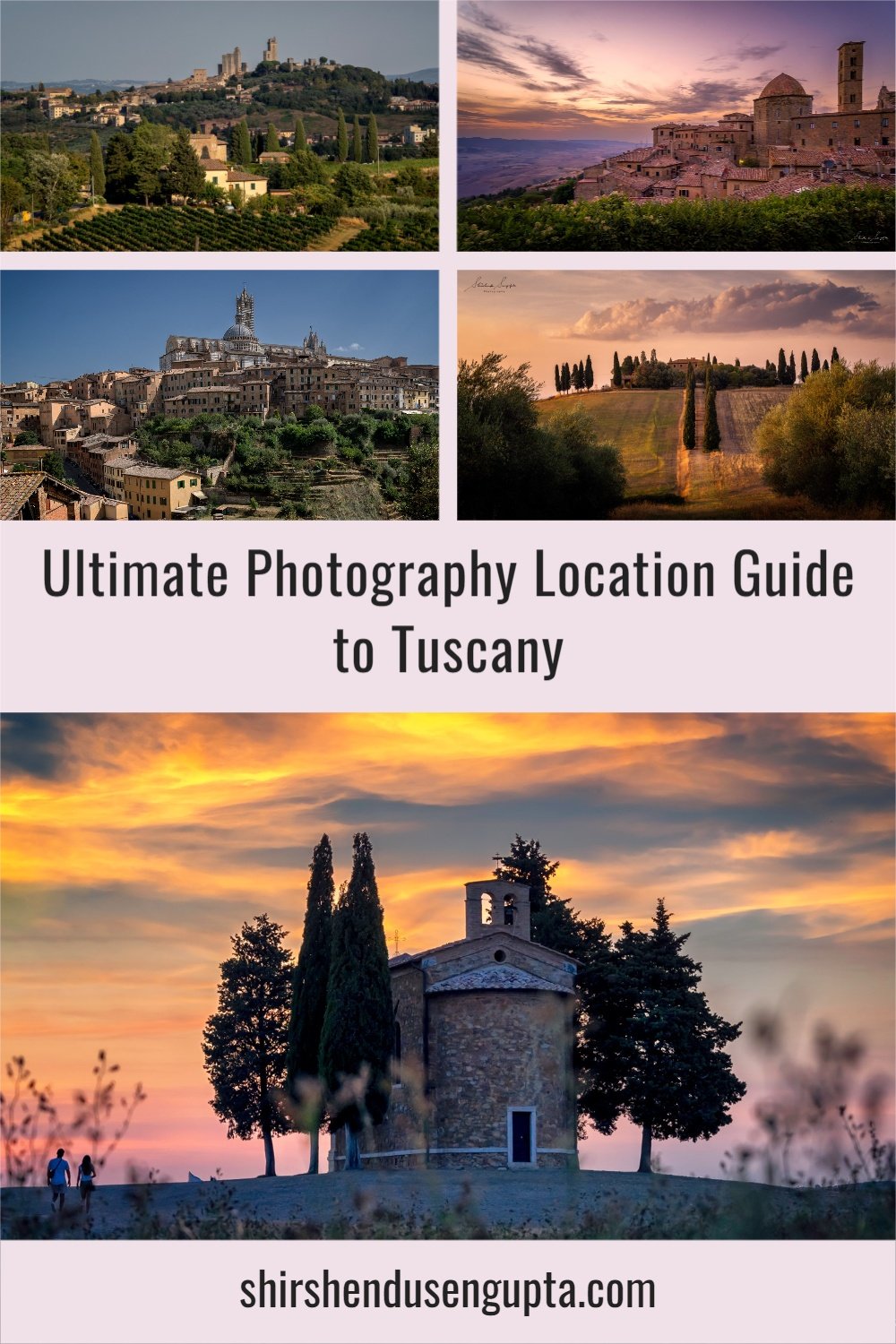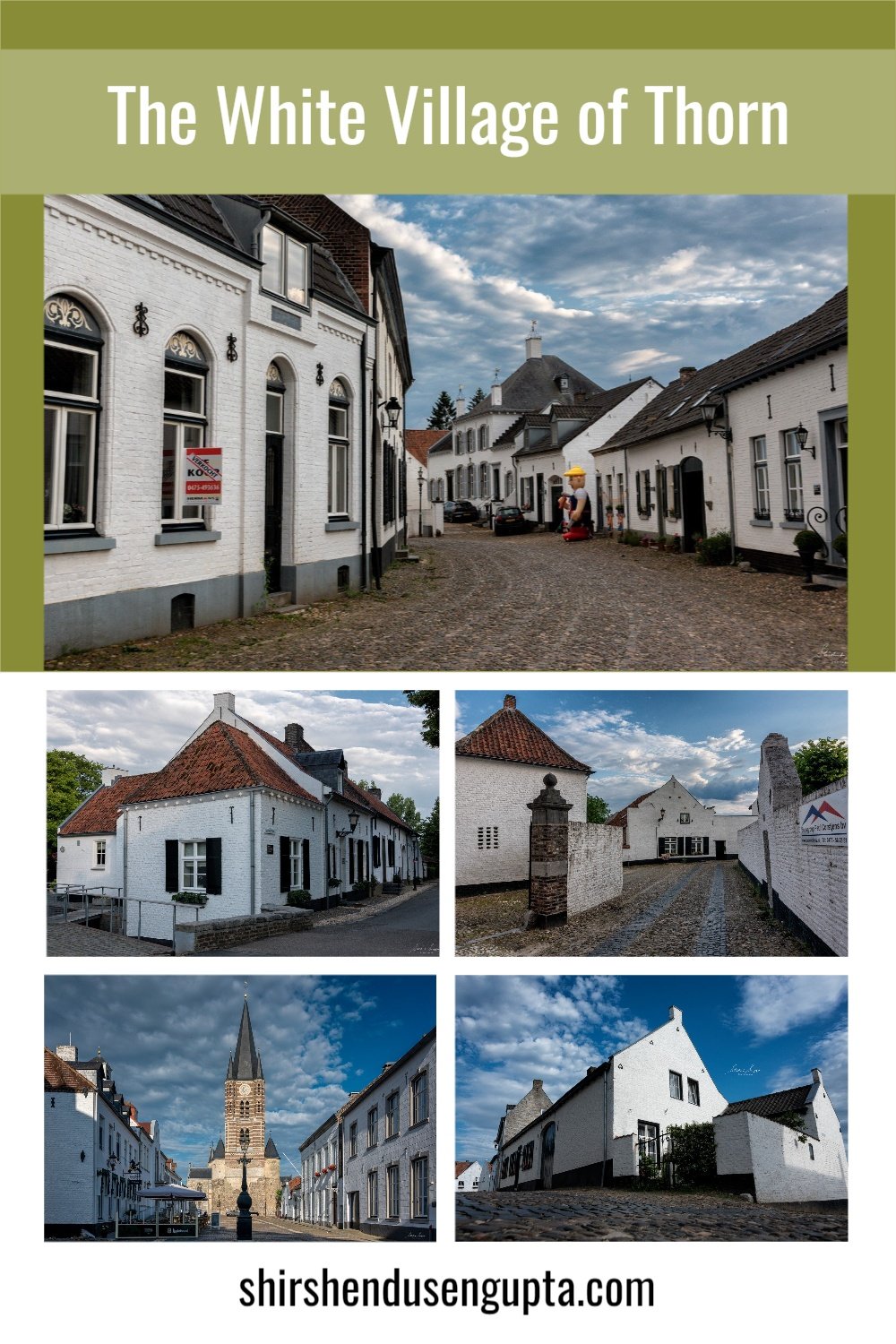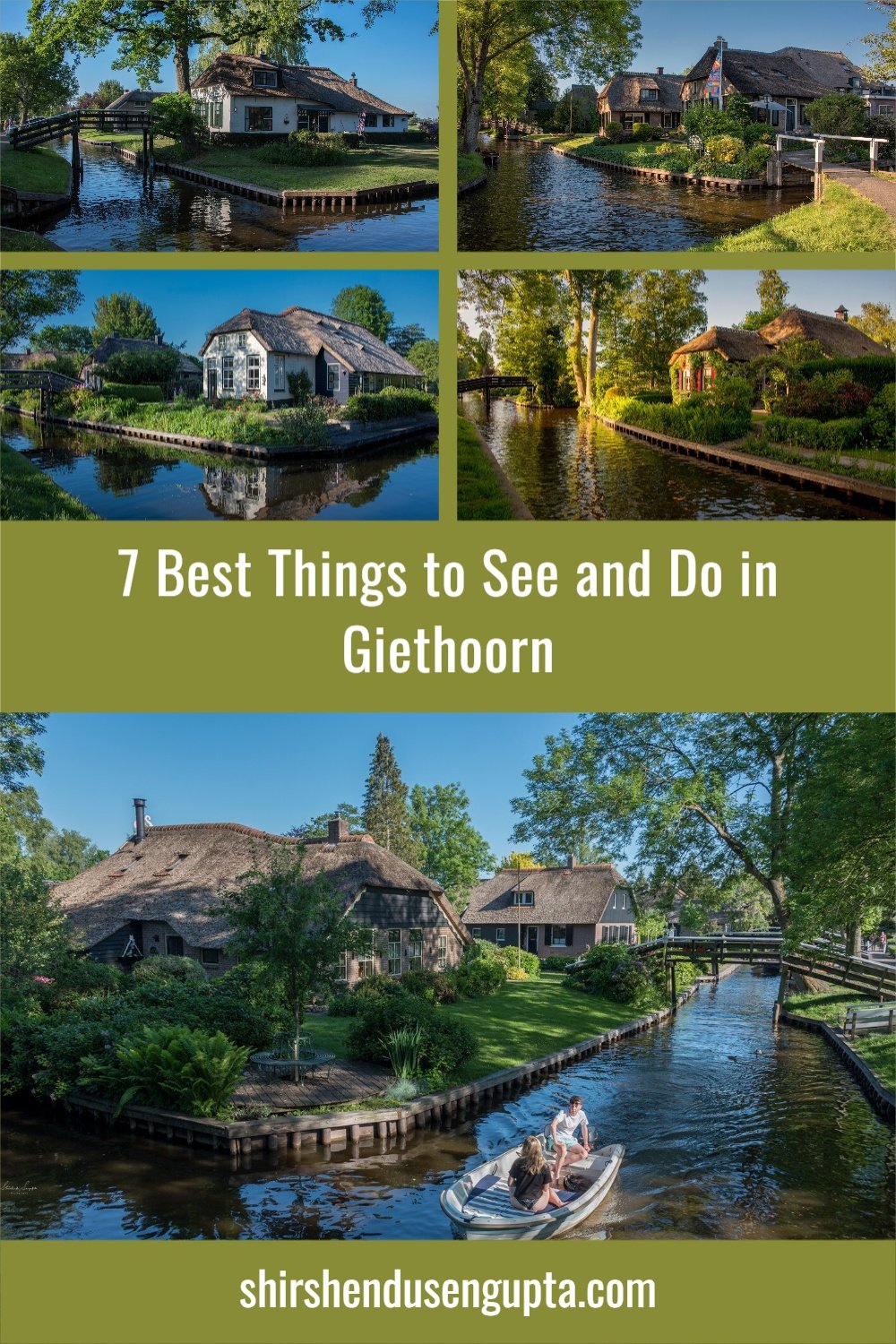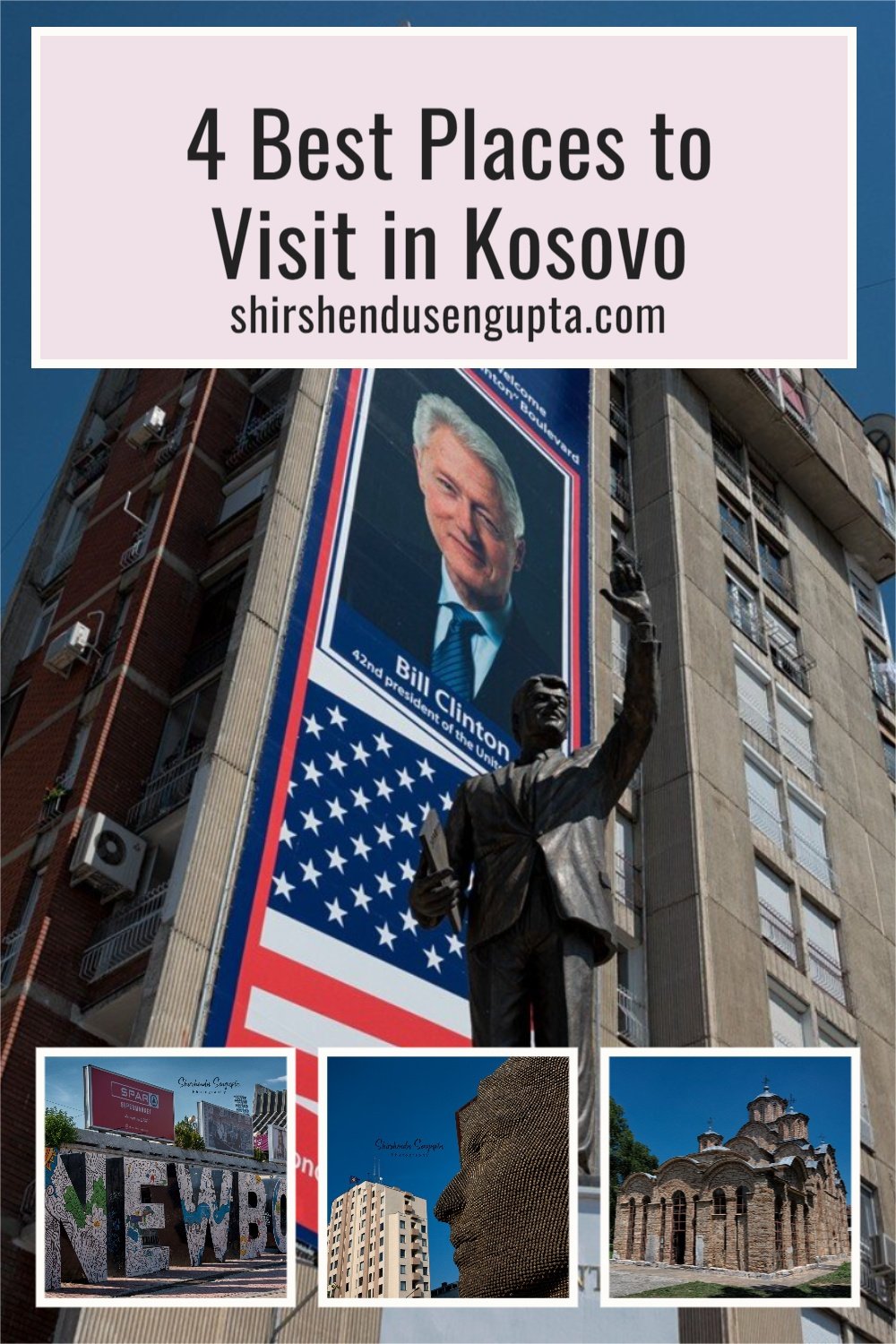The Perfect ‘One Day Visit to Gibraltar’ Itinerary | 23 Top Attractions To See and Best Things To Do in Gibraltar on a Day Trip
Prologue
During a memorable Easter, we set out on an epic adventure, ‘Where Europe Meets Africa | 7000 km Road Trip from the Netherlands to Morocco through Wine Roads, Holy Sites, and Clifftop Towns of France, Spain, and Gibraltar | Itinerary, Tips, and Tricks’ (blog article coming soon). What started as a casual idea soon unfolded into one of the most memorable experiences of our lifetime. Along the way, we wandered through medieval villages, sipped wine in quiet French vineyards, stood in awe at ancient cathedrals and abbeys, drove along coastal cliffs, and watched the cultures of Europe slowly melt into the soulful rhythms of Morocco.
Amid this incredible journey, we reached Gibraltar, a place where continents almost touch and cultures intertwine. Standing at this tiny yet mighty promontory, we felt the pulse of history and the roar of the winds that have shaped empires. Gibraltar was not just a stop on our route; it was a living textbook of myths, military power, and Mediterranean beauty. The fusion of British colonial charm, Spanish warmth, and North African whispers made it unforgettable. So, based on our experience, today I’m going to take you along with me on a journey across the 23 best things to see and do in Gibraltar. Let the journey begin!
Welcome to Gibraltar
A British Overseas Territory on the southern tip of Spain, Gibraltar is a strategic gateway between the Mediterranean Sea and the Atlantic Ocean. Despite being only 6.7 square kilometers in size, it holds immense geopolitical and historical significance. For centuries, it has stood as a sentinel guarding the Strait of Gibraltar, a narrow waterway that separates Europe from Africa and connects the Mediterranean Sea to the Atlantic Ocean. The Rock itself rises dramatically from the sea, its limestone cliffs concealing both natural wonders and secret wartime tunnels.
Gibraltar’s story stretches back to antiquity. The ancient Greeks believed the Rock to be one of the mythical Pillars of Hercules, marking the edge of the known world. Later, it became a Moorish stronghold during Islamic rule in the Iberian Peninsula, before falling under Spanish and eventually British control. Today, the territory reflects a fascinating mix of influences: Spanish architecture, British pubs, Moorish ruins, World War tunnels, and Mediterranean flair coexist seamlessly. Gibraltar is broadly divided into two main areas -
The Upper Rock - A rugged nature reserve known for its dramatic cliffs, monkeys, and caves
The Lower City - A flat urban area by the sea filled with colonial buildings, lively squares, and shops.
Together, they make Gibraltar one of the most captivating small destinations in Europe.
Entering Gibraltar
We visited Gibraltar from Spain, approaching from the sun-drenched coastal town of La Alcaidesa. Instead of driving into Gibraltar, which can often be slow and expensive due to limited parking and frequent queues, we opted for a far simpler and more cost-effective plan. We parked our car at Aparcamiento Santa Bárbara in the Spanish municipality of La Línea de la Concepción, a large, well-maintained parking area just a few hundred meters from the border checkpoint. It offered excellent security, affordable rates, and plenty of space even during busy hours, making it ideal for day-trippers like us.
From there, it took barely five minutes on foot to reach the border. The transition was astonishingly smooth, a quick stroll from Spanish sunshine to British charm. After showing our passports, we stepped through the gate into a completely different world: red phone booths, English road signs, and Gibraltar flags fluttering in the sea breeze. The feeling was surreal: crossing an international border felt no more complicated than walking across a city street. In that moment, we realized Gibraltar’s magic lies precisely in this seamless meeting of cultures, continents, and histories.
23 Best Things To See and Do in Gibraltar
Upper Rock
We started our Gibraltar adventure with the Upper Rock. Private vehicles are not allowed up except for residents and taxis with special permits. Visitors generally have two options -
The Cable Car - The Gibraltar Cable Car lifts you straight from the city center (near Grand Parade) to the Top of the Rock in just 6 minutes. At the time of writing this article, a round-trip on the cable car, including Upper Rock Nature Reserve entry ticket, costs £38 (€45) for adults and £22 (€26) for children (4-11 years). A one-way trip including Upper Rock Nature Reserve entry ticket costs £35 (€41) for adults. The Upper Rock Nature Reserve ticket itself costs £19 (€23) for adults and £13 (€15) for children (4-11 years). The cable car is best for independent travelers who have a lot of time at hand (may be staying at Gibraltar for a couple of days) and want to walk around at their own pace.
Rock Tour Taxi - We opted for the Rock Tour Taxi, a guided drive through Gibraltar’s most scenic and historic points. These taxis are run by official guides and are allowed to drive within the Upper Rock Nature Reserve. It’s ideal for families, groups, or those short on time. There are two pricing models for Rock Tour Taxi -
Shared Car With Other Tourists - £40 (€47) per person, including Upper Rock Nature Reserve entry ticket
Private Full Car Tour - Around £200 (€237) for a 2-hour tour, including Upper Rock Nature Reserve entry ticket. Since we were 3 adults and the cable car with Upper Rock Nature Reserve entry tickets would have costed us £114 (€135) and a lot of uphill climbing and time, we decided to opt for the Private Full Car Tour. Our Rock Tour Taxi driver picked us up right after we crossed the border, and within minutes, we were zigzagging up narrow, cliff-hugging roads carved into the ancient limestone. For the next couple of hours, he took us on a journey through Gibraltar’s layered history and jaw-dropping viewpoints.
Europa Point
Our tour began at Europa Point, the southernmost tip of the Rock, where the Mediterranean Sea meets the Atlantic Ocean and where Europe seems to stretch its arm toward Africa. Standing here, one feels an overwhelming sense of geography, history, and symbolism converging in a single panorama. This is Gibraltar’s most iconic vantage point, offering uninterrupted views across the Strait of Gibraltar to the Rif Mountains of Morocco, only 24 kilometers away on a clear day.
For centuries, Europa Point has served as a navigational beacon and a place of reflection for sailors and travelers alike. The area features several important landmarks, including the Trinity Lighthouse built in 1841, which continues to guide ships safely through one of the world’s busiest maritime passages. Nearby, you will also find the Harding’s Battery, Sikorski Memorial, and the Ibrahim-al-Ibrahim Mosque, each adding its own layer of historical or cultural significance. The Point perfectly encapsulates Gibraltar’s role as the crossroads of continents, faiths, and empires. Whether you come for the sweeping views, the spiritual atmosphere, or the maritime history, Europa Point offers a deep sense of place and timeless beauty.
A point to remember: request your Rock Tour guide to take you to Europa Point specifically, as it is normally not included in standard Rock Tour routes.
View of the Rock of Gibraltar and Ibrahim-al-Ibrahim Mosque from Europa Point
From Europa Point, the view of the Rock of Gibraltar rising behind the Ibrahim-al-Ibrahim Mosque is one of the most powerful and photogenic scenes on the peninsula. The sheer limestone mass of the Rock dominates the skyline, standing as an ancient guardian over the strait, while in front of it, the elegant white mosque gleams in the sunlight. The mosque, inaugurated in 1997 and funded by King Fahd of Saudi Arabia, is one of the largest in a non-Muslim country and serves as a symbol of faith and coexistence in this diverse British Overseas Territory. Its intricate Islamic architecture, graceful minaret, and shining dome create a striking visual harmony against the rugged cliffs of the Rock and the endless blue of the sea.
On clear days, the faint outline of the Moroccan coast can be seen on the horizon, creating an almost surreal link between continents. The gentle sound of waves, the crisp sea breeze, and the rhythmic call to prayer make the place feel both sacred and cinematic. This view captures Gibraltar’s essence in one frame: nature’s grandeur, human devotion, and the eternal dialogue between Europe and Africa, stone and sea, past and present.
Trinity Lighthouse
Just steps away stands the Trinity Lighthouse, an enduring symbol of Gibraltar’s maritime legacy. Built in 1841 by the British Trinity House, this red-and-white sentinel stands proudly at the exact meeting point of the Atlantic Ocean and the Mediterranean Sea. Rising nearly 50 meters above sea level, the lighthouse still functions today, guiding vessels safely through one of the world’s busiest shipping lanes. Watching its beam sweep across the waters as gulls circled overhead was both calming and awe-inspiring. For centuries, this spot has been the first glimpse of Europe for sailors arriving from Africa and the last farewell for those departing toward the open Atlantic. The surrounding area includes a small viewing platform, from which the panoramic vista is nothing short of magnificent: the deep blue strait below, the hazy Moroccan coastline in the distance, and the Rock towering behind.
Beyond its practical purpose, the lighthouse stands as a symbol of endurance and guidance, echoing Gibraltar’s own history as a steadfast guardian of the gateway between seas and civilizations. It’s a spot that captures both the romance of exploration and the quiet strength of those who keep the lights burning at the world’s edge.
Harding’s Battery
From the lighthouse, we wandered toward Harding’s Battery, a historic artillery post perched dramatically on the cliffs of Europa Point. Built in the mid-19th century and named after Sir George Harding, an esteemed British engineer, the battery once formed part of Gibraltar’s formidable coastal defense network. It was originally constructed to house a 12.5-inch, 38-ton rifled muzzle-loading gun, capable of defending the strait against enemy ships. In later years, one of the legendary 100-ton Armstrong guns, among the largest of their kind, was tested nearby, representing the height of Victorian military innovation.
Today, Harding’s Battery has been beautifully restored, blending its military heritage with modern interpretive displays. Standing there, with the wind whipping across the limestone cliffs and the endless sea stretching to the horizon, it was easy to imagine the thunder of artillery echoing through the ages. The site now includes a viewing terrace offering sweeping coastal vistas, making it one of the best photography spots in southern Gibraltar. While much quieter now, Harding’s Battery still tells a story of ingenuity, resilience, and Gibraltar’s centuries-long role as a strategic fortress guarding the entrance to the Mediterranean.
Sikorski Memorial
Just a short stroll from Harding’s Battery stands the poignant Sikorski Memorial, a solemn reminder of Gibraltar’s connection to World War II history. The memorial honors General Władysław Sikorski, Poland’s wartime Prime Minister and Commander-in-Chief, who tragically died in a plane crash shortly after takeoff from Gibraltar on July 4, 1943. His death, which claimed several others on board, has remained one of the great mysteries of the war, with theories ranging from mechanical failure to political conspiracy. The site of the crash lies just off the coast here, where his Liberator aircraft plunged into the sea moments after departure.
The granite monument, shaped like an aircraft wing, bears inscriptions in Polish and English, along with a bronze eagle, Poland’s national symbol, soaring skyward in tribute. Surrounded by views of the sea where the tragedy occurred, the memorial evokes both loss and resilience. For Polish visitors, it is a place of national pride and reflection, while for others, it serves as a touching reminder of the sacrifices shared across nations during a time of global turmoil. The wind, the waves, and the quiet solemnity here give it a timeless dignity.
Pillars of Hercules
Our next stop, the Pillars of Hercules monument, blends myth, geography, and symbolism. According to ancient legend, Hercules, in one of his Twelve Labors, tore apart a great mountain that once connected Europe and Africa, forming the Strait of Gibraltar and marking the boundary of the known world. The two promontories, the Rock of Gibraltar in Europe and Jebel Musa in Morocco, became the fabled “Pillars of Hercules.” The monument at Gibraltar’s Pillars site celebrates this myth with twin stone columns framing a bronze globe, engraved with the words “Non Plus Ultra,” meaning “Nothing Further Beyond.” For ancient mariners, this phrase signified the edge of civilization, the limit of exploration before the uncharted Atlantic.
Standing at the viewpoint, with the African coast visible across the strait, the story comes vividly to life. It’s a powerful reminder of how geography and mythology often intertwine, shaping how humans have viewed the world for millennia. The monument also symbolizes Gibraltar’s unique position as a gateway between continents, a bridge where Europe looks outward to Africa and beyond. The view from here is magnificent: the sea, the wind, and the legend all converging into one unforgettable moment.
St. Michael’s Cave
St. Michael’s Cave is one of Gibraltar’s most mesmerizing natural wonders, located deep within the Upper Rock Nature Reserve. For centuries, the cave has captivated visitors with its cathedral-like chambers and dazzling formations of stalactites and stalagmites. The ancient Greeks and Romans once believed this cave to be the fabled entrance to the underworld, and early explorers thought it stretched all the way beneath the Strait of Gibraltar into Africa. In reality, it is a network of limestone caverns shaped by rainwater slowly dissolving the rock over millions of years.
St Michael’s Cave takes its name from the archangel Michael, a figure associated with protection and sacred places in Christian tradition. Early visitors believed the cave had a mystical quality, and one of its stalactite and stalagmite formations even resembles the outline of an angel, which reinforced the dedication to the archangel. Over time, the name remained, and the cave became renowned not only for its legends but also for its dramatic natural formations and long history of human fascination.
Today, the cave is beautifully illuminated with colored LED lights, enhancing the surreal atmosphere. Its largest chamber, known as the Cathedral Cave, has been transformed into a remarkable auditorium used for concerts and events, where natural acoustics create a hauntingly beautiful resonance. Walking inside, you feel transported to another world where nature itself has sculpted art.
Beyond its beauty, St. Michael’s Cave also carries historical significance: it served as an emergency hospital during World War II. Whether viewed as a geological marvel, a place of myth, or a symbol of endurance, the cave stands as one of Gibraltar’s most unforgettable attractions.
Skywalk
The Gibraltar Skywalk is one of the most thrilling viewpoints on the Rock, offering a breathtaking 360-degree panorama that stretches across three countries and two continents. Perched 340 meters above sea level on a glass platform built over a former military lookout, the Skywalk invites visitors to stand literally above the clouds and gaze out over the deep blue expanse of the Mediterranean Sea. To the north lies the rugged coastline of southern Spain, while to the south, on a clear day, the mountains of Morocco rise faintly across the Strait of Gibraltar. Beneath your feet, the city of Gibraltar unfolds like a miniature model, its harbor and airport runway visible far below. The sensation of standing on transparent glass while the wind rushes by is exhilarating and slightly vertigo-inducing, yet completely safe thanks to reinforced panels designed to hold several tonnes of weight.
The Skywalk was inaugurated in 2018 with actor Mark Hamill, known for portraying Luke Skywalker, fittingly cutting the ribbon. Surrounded by dramatic cliffs and open sky, this spot captures the essence of Gibraltar’s geography and grandeur. It is one of the best places to experience how the Rock connects Europe and Africa, land and sea, past and present.
Ape’s Den
No visit to Gibraltar is complete without encountering its most famous residents, the Barbary macaques, at Ape’s Den in the Upper Rock Nature Reserve. These charismatic monkeys are the only wild primates in Europe and have lived on the Rock for centuries, likely introduced from North Africa during Moorish or early British rule. They are playful, curious, and highly photogenic, often lounging on railings, hopping along paths, or observing visitors with an almost human intelligence. Local legend holds that as long as the macaques remain, Gibraltar will remain under British control. During World War II, Winston Churchill famously took this superstition seriously and reportedly ordered that their population be reinforced when it began to decline, remarking, “As long as the monkeys stay, Gibraltar stays British.” This charming belief has endured, and the monkeys continue to captivate both locals and tourists alike.
Visiting Ape’s Den provides an opportunity not only to watch their mischievous antics but also to understand their symbolic significance in Gibraltar’s history. Surrounded by panoramic views of the Mediterranean Sea, the African coastline, and the cliffs of the Upper Rock, the Den offers a perfect combination of wildlife, folklore, and scenery, making it one of Gibraltar’s most memorable stops.
Great Siege Tunnels
Carved into the northern face of the Rock, the Great Siege Tunnels stand as a monument to human ingenuity and determination. During the Great Siege of Gibraltar (1779–1783), when Spain and France attempted to recapture Gibraltar from Britain, the British forces faced overwhelming odds. Under constant bombardment, they devised a daring plan: to tunnel into the limestone to create hidden artillery positions overlooking the isthmus that connected Gibraltar to Spain. Using only sledgehammers, chisels, and gunpowder, soldiers painstakingly carved out more than 300 meters of tunnels by hand. The conditions were brutal, yet the results were extraordinary. The openings created served as gun ports and observation points, allowing the British to fire down upon enemy forces from protected positions. The tunnels played a crucial role in defending Gibraltar and eventually ensured the British victory.
Today, visitors can walk through the same passages, see the cannons still in place, and read about the siege through interactive exhibits. Dimly lit and echoing with history, the tunnels bring to life the courage and creativity of those who fought to hold this strategic stronghold. It remains one of the most remarkable feats of military engineering from the 18th century.
View Outside the Great Siege Tunnels - Cannon, Airport Runway, and Port of Gibraltar
Stepping outside the Great Siege Tunnels, the view instantly rewards you with one of Gibraltar’s most photogenic perspectives. Directly in front, an old artillery cannon stands proudly, a silent testament to the Rock’s long military history and strategic importance. Its weathered iron and stone base contrast sharply with the bright blue sky, creating a perfect composition for photography enthusiasts. From this vantage point, you can look down across the sprawling city below, where the streets of Gibraltar wind between historic buildings, bustling squares, and colonial architecture.
Beyond the urban landscape, the Gibraltar airport runway comes into view, famously cutting across the main road and connecting land and air in a way that is both unusual and fascinating. The sight of planes taxiing and taking off against the backdrop of the Rock adds a dynamic, modern element to this historic panorama. It is the only runway in the world that pedestrians can cross on foot when exiting Gibraltar back to the parking in Spain, adding a touch of thrill to the journey.
To the west, the Port of Gibraltar stretches along the coastline, filled with yachts, cruise ships, and cargo vessels, highlighting the Rock’s enduring role as a gateway between the Mediterranean and the Atlantic. The combination of historic cannon, cityscape, operational airport, and busy port offers a dramatic, multi-layered view that perfectly captures Gibraltar’s unique blend of past and present, making this spot a must-visit for photographers and history lovers alike.
World War II Tunnels
During World War II, Gibraltar’s strategic position as the “key to the Mediterranean” once again placed it at the heart of global conflict. To fortify the Rock, British military engineers expanded its already complex network of tunnels, creating an underground city that could house over 16,000 troops. The World War II Tunnels, stretching more than 50 kilometers through solid limestone, included everything from command centers and hospitals to power stations and kitchens. Life inside was harsh but vital to the Allied war effort. Gibraltar served as a critical naval and air base controlling the entrance to the Mediterranean, and the tunnels were the nerve center of those operations.
Walking through them today, visitors encounter wartime maps, machinery, bunk beds, and mannequins recreating the daily routines of soldiers and engineers. Guides recount stories of secret missions, hidden rooms, and even Operation Tracer, a top-secret plan to seal a team of men inside the Rock should Gibraltar fall to the enemy. The tour provides a fascinating glimpse into wartime life and the immense strategic importance of Gibraltar during the 1940s. It is both humbling and awe-inspiring to stand where history was quietly, but decisively, shaped beneath the stone.
Moorish Castle
The Moorish Castle stands proudly on the northern slopes of the Rock, its weathered stone walls bearing witness to more than a thousand years of history. Originally built in the early 8th century during the first Moorish occupation of Gibraltar, the castle was reconstructed and expanded in the 14th century by the Marinid dynasty of Morocco. Its most prominent feature, the Tower of Homage, still dominates the skyline, its battlements rising above the city below. The castle served not only as a military fortress but also as a symbol of Islamic rule in Al-Andalus, reflecting the architectural style and cultural sophistication of the medieval Moors. When the Spanish captured Gibraltar in 1462 and the British later took control in 1704, the castle remained a stronghold of power and defense. During more recent centuries, parts of it were used as a prison, giving it yet another chapter in its layered story.
Today, visitors can explore its ancient courtyards, steep stairways, and viewpoints offering commanding views across the bay. The Moorish Castle stands as a powerful reminder of Gibraltar’s multicultural past and the centuries of struggle, conquest, and coexistence that have shaped this small but extraordinary peninsula.
Lower City
After descending from the Upper Rock, we explored Gibraltar’s Lower City on foot, a far gentler pace filled with food, history, and colonial charm. The walk allowed us to immerse ourselves in the vibrant daily life of this compact city, where British, Spanish, and Mediterranean influences mingle seamlessly. Our first stop was Grand Casemates Square, the lively heart of Gibraltar, where locals and tourists congregate amidst historic buildings and open-air cafes. We grabbed refreshing fruit slushies while children chased pigeons and people lounged under the sun, enjoying the square’s energetic yet relaxed atmosphere. From there, we wandered to Ocean Village, a modern marina lined with palm trees, yachts, and waterfront restaurants, exuding a Mediterranean vibe that momentarily made us forget we were technically in Britain. Old Town Main Street offered a mix of duty-free shops, traditional British pubs, and Spanish chatter, giving the street a uniquely hybrid character. Walking through the Lower City, visitors encounter a fusion of history, commerce, and leisure, providing a stark but charming contrast to the dramatic Upper Rock, and allowing a slower, more personal connection to this remarkable territory.
Grand Casemates Square
At the heart of Gibraltar’s Lower City lies Grand Casemates Square, the social and cultural hub where history and modern life converge. The square dates back to the 18th century when it served as a fortified military area, but today it thrives as a lively public space. Its open layout is framed by historic buildings featuring classic colonial architecture, offering a glimpse into Gibraltar’s layered past. Cafes, bars, and restaurants spill into the square, creating a vibrant, open-air atmosphere where locals and tourists mingle effortlessly.
On our visit, the square was bustling with activity: children chased pigeons across the cobbled ground, street performers entertained passersby, and families gathered to enjoy the sun. We stopped at a small kiosk for fruit slushies, savoring the refreshing flavors as we watched the energy of the square unfold around us. Grand Casemates Square also serves as a venue for cultural events, concerts, and festivals throughout the year, further solidifying its importance as a social focal point. The combination of historical significance, lively atmosphere, and pedestrian-friendly layout makes it an essential stop in Gibraltar, offering both a connection to the past and an opportunity to experience the contemporary heartbeat of this unique British Overseas Territory.
Ocean Village
From Grand Casemates Square, we strolled to Ocean Village, a modern marina that showcases Gibraltar’s cosmopolitan side. This waterfront area is lined with palm trees, luxury yachts, and contemporary restaurants, creating a distinctly Mediterranean atmosphere that contrasts beautifully with the historical streets of the Lower City. The marina’s wide promenades invite leisurely walks while offering excellent vantage points for photography of both boats and the shimmering sea. The area is designed for relaxation and recreation, with cafes and bars offering outdoor seating that allows visitors to enjoy the sun, sea breeze, and harbor views. Ocean Village is also a hub for water sports, sailing, and boating tours, making it ideal for travelers looking to experience Gibraltar from the water.
Despite its modern appearance, the marina still reflects the territory’s maritime heritage, linking Gibraltar’s historical significance as a naval stronghold to its contemporary lifestyle. We paused to take in the yachts, noting how the skyline of the Upper Rock loomed dramatically in the background, creating a striking juxtaposition between natural grandeur and human-made elegance. Ocean Village perfectly embodies Gibraltar’s dual identity, blending British colonial history, Mediterranean charm, and a cosmopolitan waterfront energy.
Old Town Main Street
Gibraltar’s Main Street runs through the historic Lower City, offering a lively blend of British and Mediterranean culture. This central thoroughfare is a bustling mix of duty-free shops, traditional British pubs, souvenir stores, and cafes, where English signage coexists seamlessly with Spanish chatter. Walking along Main Street provides a unique experience of Gibraltar’s hybrid identity, reflecting centuries of British rule layered over Iberian influences. The street is pedestrian-friendly, encouraging slow exploration and allowing visitors to absorb the architecture, from colonial facades to colorful modern renovations. During our walk, we noticed the vibrant energy of locals conducting daily errands, tourists pausing to shop or take photos, and street performers adding charm to the atmosphere.
Main Street also leads to several historic landmarks, making it an ideal spine for navigating the Lower City on foot. Cafes and small eateries dotted along the route invited us to pause and enjoy snacks while people-watching, enhancing the immersive experience. The combination of history, commerce, and lively street life makes Main Street more than just a shopping destination; it is the beating heart of Gibraltar’s Lower City. Every turn along the street offers a new perspective on the territory’s cultural blend, making it an essential part of any walking tour.
Cathedral of St. Mary the Crowned
The Cathedral of St. Mary the Crowned is one of Gibraltar’s most historically layered landmarks, reflecting centuries of cultural and religious transformation. Originally a mosque during the Moorish period, it was converted into a Spanish Catholic church following the 15th-century reconquest and later became Anglican under British rule. This rich history is evident in the cathedral’s architecture, which blends Gothic, Moorish, and colonial elements. Walking through its doors, visitors are greeted by intricate stonework, stained glass windows, and vaulted ceilings that tell the story of Gibraltar’s evolving identity. The interior exudes a serene atmosphere, with sunlight streaming through the colorful glass, illuminating the centuries-old wooden pews and ornate altar.
Beyond its aesthetic appeal, the cathedral is an active place of worship, hosting daily services and special ceremonies. Its location in the Lower City makes it an easily accessible stop during a walking tour, offering a moment of quiet reflection amidst the bustling streets. The cathedral also houses numerous historical artifacts and memorials, including relics from Gibraltar’s military past and its diverse religious communities. Visiting St. Mary the Crowned provides not only insight into Gibraltar’s religious evolution but also a deeper understanding of how faith, culture, and history coexist on this small yet extraordinary peninsula.
National Museum
The National Museum of Gibraltar, located in the heart of the Lower City, offers a comprehensive journey through the territory’s extensive history. Housed in a restored 18th-century building, the museum combines archaeological, military, and cultural exhibits to give visitors a full sense of Gibraltar’s past and present. Exhibits begin with prehistoric artifacts, including Neanderthal skulls discovered in local caves, offering fascinating insight into early human life on the Rock. Moving forward in time, it displays chronicles of the Moorish occupation, Spanish rule, and eventual British administration, highlighting key events such as the Great Siege and World War II defenses. The museum also features detailed naval exhibits, emphasizing Gibraltar’s crucial maritime role at the gateway between the Atlantic and Mediterranean. Visitors can see models, maps, and artifacts from battles, fortifications, and daily life, providing context to what they experienced on the Upper Rock.
The National Museum is thoughtfully curated, combining educational panels with interactive displays to engage audiences of all ages. Walking through the halls, one gains a deeper appreciation for Gibraltar’s strategic importance, cultural diversity, and enduring resilience. It is an essential stop for anyone wanting to understand the historical layers that shape Gibraltar, bridging natural wonders with human endeavor in one compact and accessible location.
Cathedral of the Holy Trinity
The Cathedral of the Holy Trinity is a remarkable symbol of Gibraltar’s cultural and religious diversity, located in the Lower City near the main commercial streets. Built in the early 19th century as an Anglican cathedral, it incorporates Moorish-style arches and Neo-Gothic design elements, reflecting the blend of influences that characterize Gibraltar. Its whitewashed walls and high ceilings create a serene, airy interior, while sunlight filters through tall windows, casting a soft glow on the wooden pews and stone floors. The cathedral has long served as a spiritual center for the Anglican community in Gibraltar and continues to host regular services, weddings, and community events. The calm and quiet of the interior offer a peaceful counterpoint to the bustling streets outside, making it an ideal spot for reflection or simply appreciating the architectural details.
Historically, the cathedral embodies the British influence on Gibraltar, while its design nods to the territory’s Iberian and Moorish past. From the outside, its elegant façade complements the surrounding streetscape, blending seamlessly into the Lower City. A visit here provides a deeper understanding of Gibraltar’s religious heritage, offering both historical insight and a moment of tranquility amidst the lively urban environment.
The Convent
The Convent, located at the heart of Gibraltar’s Lower City, serves as the official residence of the Governor of Gibraltar and is one of the territory’s most iconic colonial buildings. Constructed in the 16th century by the Spanish and later adapted by the British, it exemplifies the blend of architectural styles that define Gibraltar, from fortified walls to elegant Georgian façades. The Convent is guarded by soldiers in traditional red uniforms, reminiscent of those at London’s Buckingham Palace, emphasizing its ceremonial and historical importance. Visitors walking past its entrance can sense the weight of history embedded in its walls, which have witnessed centuries of political change, military campaigns, and governance transitions. While the interior is largely private, guided tours occasionally offer glimpses into select areas, revealing period furnishings, portraits, and ceremonial spaces.
Surrounding the Convent are manicured gardens, courtyards, and flagpoles that enhance its stately presence. Its strategic location in the Lower City also makes it a natural endpoint for a walking tour, connecting the bustling streets, historic squares, and key religious landmarks previously explored. The Convent embodies Gibraltar’s fusion of British colonial tradition, Mediterranean geography, and historical significance, offering a tangible connection to the territory’s governance, ceremonial life, and enduring strategic importance.
Wrap-up of Lower City Exploration
After exploring the Upper Rock, wandering through Gibraltar’s Lower City on foot provided a refreshing and immersive perspective of this compact yet culturally rich territory. It allowed us to appreciate the territory’s human scale, contrasting the dramatic grandeur of the Upper Rock with the intimacy of streets, plazas, and harbors below. After this exhausting but exhilarating day, we walked back through the border into Spain, crossing the Gibraltar Airport runway on the way, collected our car, and headed to a nearby restaurant for dinner. After dinner, we drove back to our apartment in La Alcaidesa, reflecting on a day filled with history, scenery, and unique experiences.
Other Interesting Places to Visit in Gibraltar
If you are staying more than a day, you can also choose to explore more of the following Gibraltar’s fascinating sights that showcase its military history, scenic views, and coastal charm -
Windsor Suspension Bridge: A thrilling 71-meter-long footbridge offering panoramic views across the Gibraltar Nature Reserve.
Sandy Bay Beach: A golden beach on the eastern side, perfect for swimming and soaking in Mediterranean sunshine.
O’Hara’s Battery: A historic artillery site at the Rock’s summit with sweeping views stretching to North Africa.
100 Ton Gun: A massive Victorian coastal defense cannon showcasing 19th-century British engineering might.
Visiting Gibraltar
Best Time to Visit: The best time to visit Gibraltar is between March and June or September and November, when the weather is pleasantly warm and the skies are clear. Summer months can be quite hot and crowded, especially when cruise ships dock. Spring offers ideal conditions for sightseeing and photography, with blooming flowers around the Rock and less humidity. Winter is mild but windier, with occasional showers. These shoulder seasons also provide more affordable accommodations and fewer queues at major attractions, making them perfect for travelers who want to explore Gibraltar comfortably and without the peak-season rush. We visited Gibraltar during the Easter holidays (April end - May start).
Number of Days to Stay: While Gibraltar can be explored in a single day, staying one or two nights allows for a more relaxed experience. A day trip is enough to cover the main highlights like the Upper Rock, Europa Point, and the Lower City. However, staying overnight lets you enjoy Gibraltar’s evening atmosphere: dining at Ocean Village, watching the sunset from the Skywalk, or strolling along the marina under twinkling lights. It also gives you more time to explore museums, shopping areas, and hidden viewpoints without rushing. For road-trippers, a night stay fits perfectly between the southern Spain and Morocco routes.
Best Place to Stay: Gibraltar offers a range of accommodation options, from boutique hotels to waterfront resorts. For travelers seeking comfort and views, The Rock Hotel is a classic choice, offering historic charm and stunning panoramas of the Bay of Gibraltar. Sunborn Gibraltar, a luxury yacht hotel docked in Ocean Village, combines modern style with unbeatable location and amenities. Budget travelers can consider Holiday Inn Express Gibraltar or Bristol Hotel, both close to major attractions. Staying in Gibraltar’s city center or marina area provides easy walking access to restaurants, shops, and public transport, making exploration convenient and enjoyable.
Best Way to Arrive: The easiest way to reach Gibraltar is through La Línea de la Concepción in southern Spain. Most visitors park their car at Aparcamiento Santa Bárbara, just a few minutes’ walk from the border, like we did. Crossing on foot is quick and hassle-free, with passport checks taking only a few minutes. Alternatively, Gibraltar International Airport receives flights from London, Manchester, and other UK cities. Bus connections from Algeciras and Málaga also serve La Línea. Driving into Gibraltar is possible but often slow due to limited parking and traffic queues. Walking across remains the most efficient and cost-effective option for day trippers.
Best Local Mode of Conveyance: Within Gibraltar, walking is the best way to explore the Lower City, while the Rock Tour Taxi or Cable Car is ideal for reaching the Upper Rock. Taxis are widely available and reasonably priced, especially for short distances between the border, the city center, and the marina. Public buses run efficiently along the main routes, connecting key attractions and residential areas. For those arriving on foot, taxis and tour vehicles are conveniently located near the border checkpoint. Cycling is possible but challenging due to steep inclines. Overall, a combination of walking and guided transport offers the best experience for day visitors.
Epilogue
Gibraltar may be small in size, but its story is vast: carved in stone, echoing through tunnels, and carried on the sea breeze between continents. Our day there felt like stepping through layers of history and geography, from ancient myths to modern marvels. Whether it’s the cheeky macaques, the shimmering cave, or the timeless lighthouse, every corner of Gibraltar has a tale to tell. For travelers seeking a blend of culture, adventure, and sweeping vistas, this little peninsula is pure magic.
And if you want to read the day-by-day account of our 7000 km road run from the Netherlands to Morocco during Easter, please await our article ‘Where Europe Meets Africa | 7000 km Road Trip from the Netherlands to Morocco through Wine Roads, Holy Sites, and Clifftop Towns of France, Spain, and Gibraltar | Itinerary, Tips, and Tricks’ (coming soon on our blog). Until then, merry traveling and happy shooting!
Pin the article
Bookmark the article for reading later!
Want to license/buy photos in the article?
License photos for commercial/editorial use or buy photo prints!
Want us to write an article for you?
Articles for magazines, newspapers, and websites!
Watch our Videos
Check out our videos on our Youtube Channel!
Join the Newsletter
Get updates on our latest articles!
We respect your privacy. Read our policy here.

















